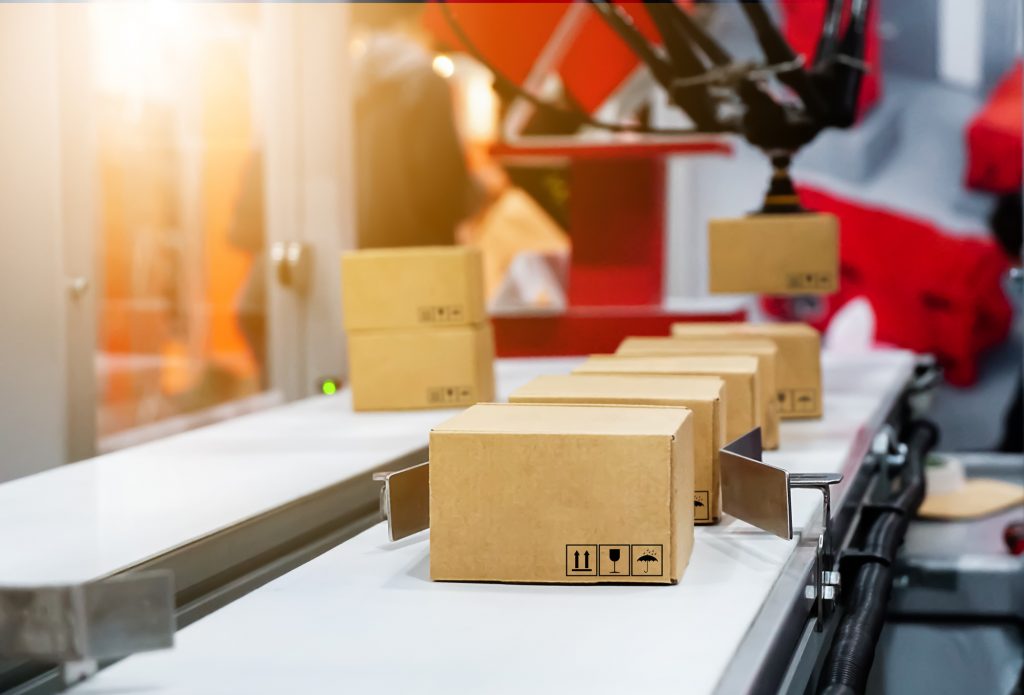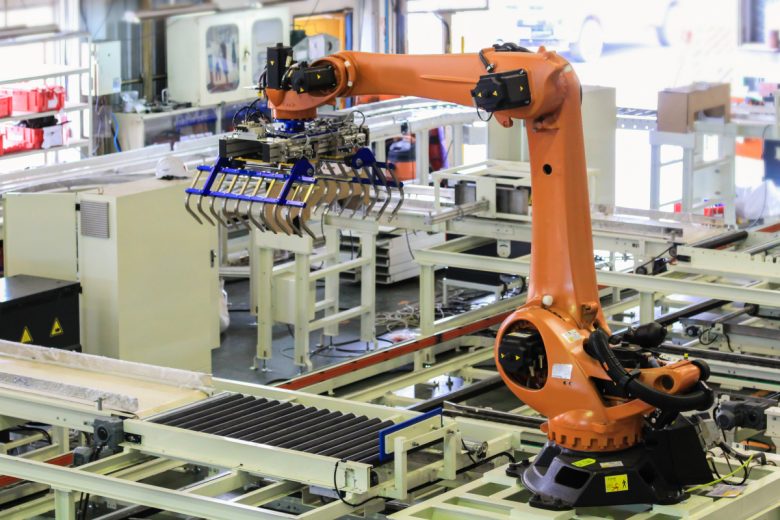The world of startups is an exciting and dynamic arena. Small businesses are sprouting, each with unique concepts, innovative products, and robust services. While many of these businesses exhibit tremendous potential, they often face the daunting challenge of scaling up efficiently. Incorporating automation into their operations can be a game-changer among the many aspects to consider.
Among the various facets of automation, robotic packing systems have particularly shown promising results. They can significantly boost productivity, eliminate human errors, and save operational costs. In essence, they can be an integral part of the strategy to propel startups to the next level of growth and competitiveness.
Understanding Robotic Packing Systems
Robotic packing systems are machines designed to automate the process of packing goods. They’re often used in manufacturing, food and beverage, pharmaceuticals, etc. These robots work faster and more accurately than humans, reducing errors and increasing productivity.
Moreover, robotic packing systems can operate 24/7 without fatigue, an exceptional advantage for startups looking to optimize their production. They also help reduce the risk of workplace injuries associated with manual packing tasks.
Why Startups Should Invest In Robotic Packing Systems
Scaling operations is a common challenge for startups. Yet, it’s essential for survival and growth in the highly competitive business environment. Investing in robotic packing systems can provide a solution to this problem.
Firstly, these systems offer cost efficiency. Though the initial investment may be substantial, the cost benefits can far outweigh the initial expenses in the long run. They help reduce labor costs and boost productivity.
Secondly, robotic packing systems ensure high precision and consistency in packing, reducing waste and customer satisfaction. Finally, they can adapt to various packing tasks, making them suitable for startups with diverse product lines.

How Startups Can Implement Robotic Packing Systems
Knowing why to invest in these systems is only half the battle. The next step for startups is understanding how to implement them effectively.
Start by conducting an assessment of the current packing process. This will help identify areas that would benefit most from automation. The key is to start small, possibly automating one part of the process before expanding.
Next, reach out to vendors specializing in robotic packing systems. They can guide the startup to the best options based on its needs and budget. Remember that the most expensive system is not always the best fit. It’s crucial to consider the company’s long-term needs and potential growth.
Finally, investing in a robotic packing system is not just about purchasing a machine. It involves training staff to operate and maintain the system. Therefore, ensuring the availability of training and support from the vendor is vital.
Overcoming Challenges In Implementation
While the benefits of robotic packing systems are clear, implementing them isn’t without challenges. For instance, integration with existing systems may pose difficulties. However, with the right planning and execution, these hurdles can be overcome.
Ensure that the systems purchased can integrate seamlessly with the existing workflow. This might involve updating software or even re-engineering some processes. Support from the vendor during this phase can be extremely helpful.
Addressing employee concerns is another challenge. The introduction of automation may cause apprehension among workers due to fears of job loss. Clear communication about the benefits of automation for the entire organization, along with retraining programs, can alleviate these concerns.
Potential For Sustainable Operations
One major benefit of investing in robotic packing systems is the potential for more sustainable operations. These automated systems use energy more efficiently than human labor, reducing carbon emissions. They also reduce waste by precisely packing goods, minimizing materials used, and reducing the rate of product damage.
Furthermore, many robotic packing systems are now designed with energy-saving modes and environmentally friendly parts. This aligns with the growing demand for eco-conscious business practices and can result in potential tax incentives for green initiatives.
Scaling With Demand
As a startup, scaling with demand can be a significant challenge. Rapid growth can be exciting, but it can also be overwhelming, especially if you don’t have the resources to keep up. Robotic packing systems offer a solution to this problem. These systems can be scaled up or down as per demand, allowing startups to keep up with their growth without breaking the bank.
During peak seasons, robotic packing systems can run for longer hours, ensuring that order fulfillment doesn’t lag behind demand. This can help startups avoid backlogs and delays that damage their reputation and lead to lost business. Conversely, during slower periods, these systems can be scaled down, saving on unnecessary energy usage and reducing costs. This flexibility allows startups to adjust their operations as per demand, ensuring they can meet their customers’ needs while staying within their budget.
Adapting To Industry 4.0
As we move toward Industry 4.0, startups must adapt to keep up with the changing landscape. Robotic packing systems offer a way for startups to strategically move toward this new phase. By automating their operations, collecting valuable data, and using this data to further improve their processes, startups can position themselves more favorably in the competitive marketplace.
Robotic packing systems are just one element of the Industry 4.0 ecosystem. By integrating these systems with other technologies, such as artificial intelligence, machine learning, and the Internet of Things (IoT), startups can create a more interconnected and efficient operation. This can increase productivity, reduce costs, and improve customer satisfaction. By adapting to Industry 4.0, startups can position themselves as leaders in their respective industries, setting themselves up for long-term success.
Exploring New Markets
The scalability of robotic packing systems allows startups to confidently explore new markets. For example, if a company wanted to start selling its product internationally, it would need to handle an increase in orders. The efficiency of robotic packing systems would allow the startup to handle this increase and fulfill international orders without additional strain on their operations. This kind of scalability helps startups grow and fosters a more positive customer experience, as orders are fulfilled quickly and accurately.
Exploring new markets can be daunting for startups, but robotic packing systems can help mitigate some of the risks. By automating their operations, startups can reduce the risk of errors and delays, ensuring that they can meet the demands of new markets. This can help startups expand their customer base and increase revenue, setting them up for long-term success.
The Role of Robotic Packing Systems In Disaster Recovery
One aspect of business that is often overlooked is disaster recovery. Startups may not have the resources to recover quickly from unexpected incidents such as natural disasters or pandemics. Robotic packing systems can play a vital role in such scenarios.
Robots are immune to diseases and can continue working under conditions that would be unsafe for humans. Moreover, they can work around the clock, helping the startup recover more quickly from a sudden surge in demand or backlog of orders.
Conclusion
Investing in robotic packing systems isn’t just about improving efficiency or cutting costs. It’s about future-proofing the business. In an era defined by change, quickly adapting and maintaining operations can be the difference between surviving and thriving.
With foresight, planning, and effective execution, startups can leverage the power of robotic packing systems. They can transform operations, increase efficiency, and pave the way for successful growth. Remember, the future belongs to those who can adapt and evolve. Automation is no longer a luxury; it’s a necessity. By investing in robotic packing systems, startups are investing in their future.











Pingback: Everything You Wanted to Know About Online Enterprise and Were Afraid To Ask ·
Pingback: Investing In Automation: Why And How Startups Can Utilize Robotic Packing Systems | Entrepreneur Canada
Pingback: Investing In Automation: Why And How Startups Can Utilize Robotic Packing Systems – Austin Rotter
Pingback: Investing In Automation: Why And How Startups Can Utilize Robotic Packing Systems – Joseph Odierno Buffalo
Pingback: Investing In Automation: Why And How Startups Can Utilize Robotic Packing Systems – Andrea Zanon